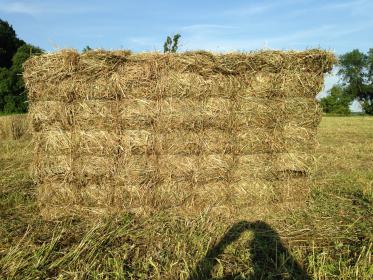With it becoming harder and harder to find the help required to handle small square bales during hay season (we cut, bale and stack our own), I am starting to look for alternatives. Switching to large squares would require much less manpower to bring hay in, and might be something for us to consider in the long term. I just wonder how much day-to-day work it adds, as small squares are much more convenient to handle at feeding time. Would anyone share how they manage it in their barn?
Also, does anyone have experience with bale bundlers? I don’t know the correct term for them, but the equipment bundles small squares into stacks that can be moved with a tractor, again negating the need for a group of people to stack hay. This might be the best of both worlds, as it still allows you to feed small squares?
We have a wonderful group of hard working people who try their best to help each year, but because they are hard workers, they all have other jobs and can’t just wait for the call to come help when hay is coming in. We pay well, are incredibly appreciative, and treat anyone who comes out very well, but each year it is tougher to find people willing to sweat and throw bales.



